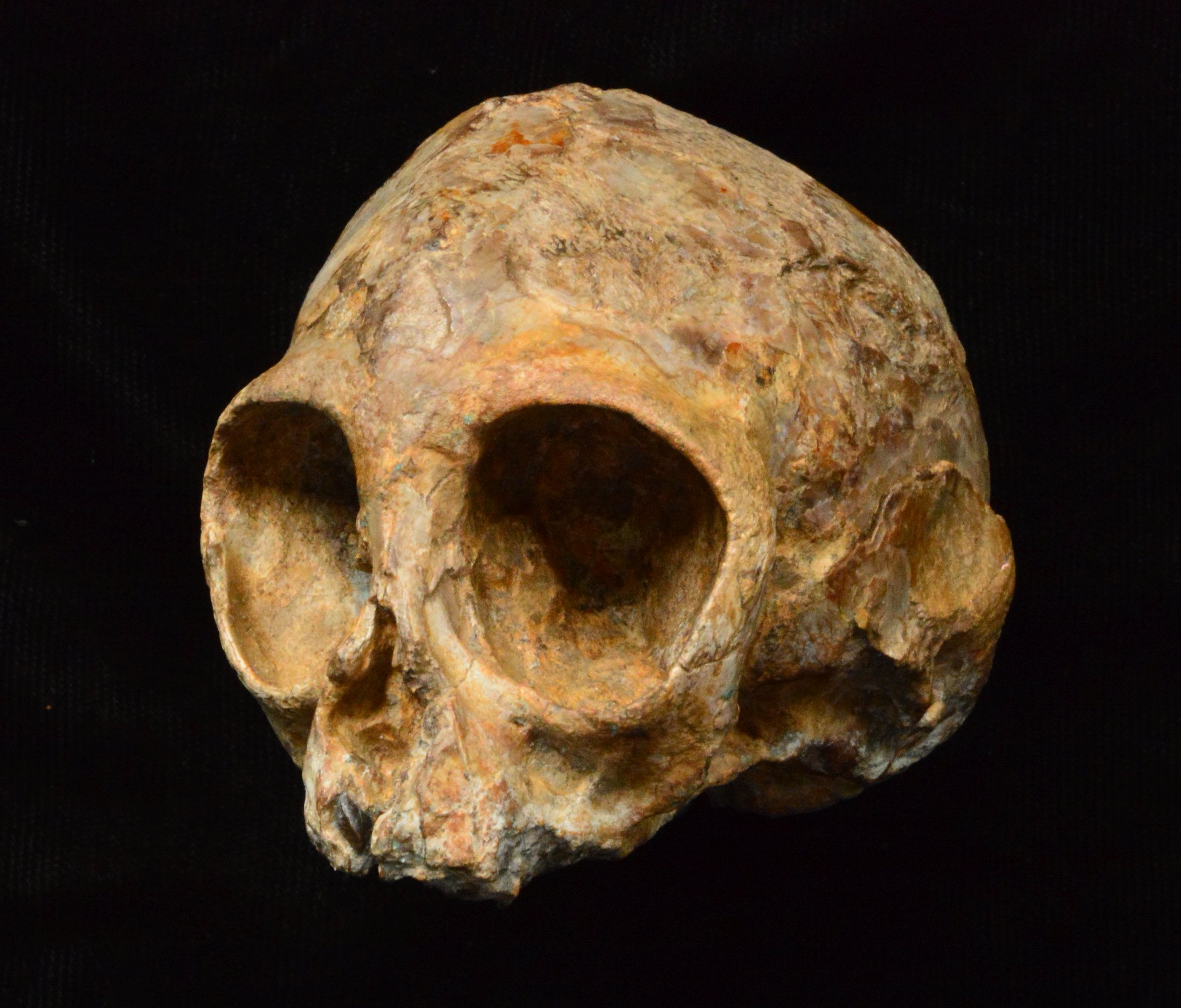Rutgers EOAS’ Craig Feibel helps date fossil in study that boosts understanding of evolution.
A 13-million-year-old infant ape skull – the oldest known fossil of its kind – is a new species that enhances knowledge of ape and human evolution, according to a study by an international team of scientists, including Craig S. Feibel at Rutgers University-New Brunswick.
“We have a beautiful ape cranium (skull) from a period that we knew virtually nothing about, and this is one of those wonderful cases where discovery leads to all sorts of new and interesting perspectives,” said Feibel, who chairs Rutgers’ Department of Anthropology and is a professor of geology and anthropology. “It’s a major finding that fills a large gap in the evolutionary record.”

Photo: © Fred Spoor
Alesi, the skull of the new extinct ape species Nyanzapithecus alesi.
The most complete fossil ape skull discovered to date was found at the 13 million-year-old Middle Miocene site of Napudet in South Turkana, Kenya, according to the study published online in Nature today. Its species name – Nyanzapithecus alesi (Ales is the Turkana word for ancestor) – is based on the unerupted permanent teeth that were revealed by high-tech synchrotron imaging used to peer inside the skull. Evidence suggests that Nyanzapithecines were close to the original ancestor of today’s apes.
Little is known about the evolution of ape skulls millions of years ago. The record of African fossil hominoids (primates that include apes, humans and their ancestors) lacked a nearly complete cranium from between 17 million and 7 million years ago, the study notes. And until now, no cranial specimens between 14 million to 10 million years ago had been discovered, greatly hampering the study of hominoid evolution. The African fossil record during the Miocene geological epoch, about 23 million to 5.3 million years ago, largely consists of isolated jaws and teeth.
Feibel, who has been studying Kenyan geology for more than 30 years, said Napudet offers a rare glimpse of an African landscape 13 million years ago.
“A nearby volcano buried the forest where the baby ape lived, preserving the fossil and countless trees,” said Feibel, who worked out the challenging geology at the site. “The skull came out of a layer of volcanic ash, and just below it was a lava flow of basalt that’s slightly older than the skull.”
He and Sara Mana, one of 13 study co-authors and a former Rutgers doctoral student who teaches at Salem State University in Massachusetts, swung sledge hammers to get basalt samples. Mana analyzed them in a lab at Rutgers’ Department of Earth and Planetary Sciences and pinpointed their age.
Nyanzapithecines, a long-lived and diverse group of Miocene hominoids, likely are close to the first species of hominoids. They first appear in the fossil record during the end of the Oligocene geological epoch in Africa (from about 33.9 million to 23 million years ago) and persisted until perhaps the late Miocene, the study says.

Photo: © Isaiah Nengo
Alesi partially excavated after careful removal of loose sand and rocks with dental picks and brushes.
The Nyanzapithecus alesi cranium suggests that the species was slower and less agile than acrobatic, arm-swinging apes such as gibbons, the study says.
The Rutgers Geology Museum in New Brunswick plans to display a cast of the infant ape skull at its 50th annual open house on Jan. 27, 2018.
“One of the fun things about this field is that it is so discovery driven,” Feibel said. “One new fossil can totally change your perspective on things, and they frequently do. More fossil prospecting at the Napudet site is well worth it since the chances of finding really exciting stuff there are very high.”
This article was originally published by Rutgers Today on August 9th, 2017.



